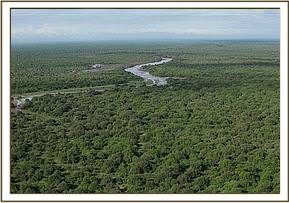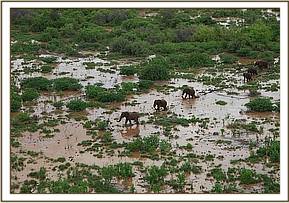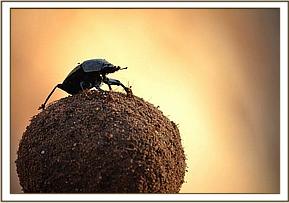After over a foot of rain has fallen in many parts of Tsavo, as huge thunderstorms sweep across the vast landscape, the transformation has been breathtaking
After over a foot of rain has fallen in many parts of Tsavo, as huge thunderstorms sweep across the vast landscape, the transformation has been breathtaking. What was not so long ago a scorched dust bowl is now unrecognizable. Thick grasses carpet the landscape where only red earth showed before. Many of the roads, first built by David Sheldrick all those years ago, are now being quickly enveloped by grass, almost covering them completely. Bushes and trees, which only weeks earlier stood grey and bare, are now flush with green, competing for sunlight. But the vegetation is not the only thing that has benefited.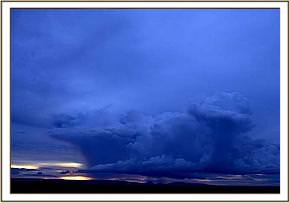

Tsavo’s wildlife is obviously celebrating such abundant times, but everywhere you look ‘smaller life’ has erupted too. Birds, insects, amphibians and reptiles alike are frantically multiplying. At night, any lit area is quickly invaded by all manner of winged creatures, from flying ants, to moths, beetles, and much more. During the day, birds busily construct nests, with whole trees covered by noisy weavers. Of course this activity does not go unnoticed, and opportunistic mongooses skulk around, waiting for a nest to drop to the ground in the hope that there might be a tasty treat inside. The soft ground and moist elephant dung has brought dozens of African dung beetles to the Ithumba stockades, rolling their spherical brood chambers away to safety. Everywhere you look, butterflies float effortlessly, coming to rest like veils upon a profusion of green.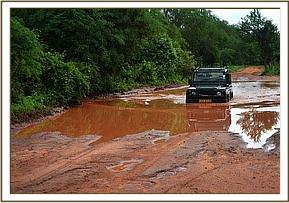
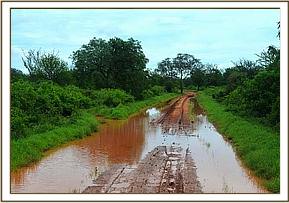

Some animals hibernate during the dry season, and reappear only when conditions are once again favorable. Among them are terrapin turtles, and Tsavo’s giant bull frogs, both of which can now be seen swimming in the most unlikely of places. Tsavo's waterholes, some caked dry for much of the year, are widely known for their prehistoric lungfishes, which once again have emerged from the ground in these wet times, after months deep in the earths crust having encased themselves in a sort of mud cocoon at the end of the previous rainy season. Also out in abundance are Tsavo’s monitor lizard population, soaking up the sun from the tops of large granite boulders, or basking on the roads, scurrying back into the thick bush at the first sign of an approaching vehicle.
Tsavo really is an incredible testament to nature's resilience, standing poised through the dry months of intense heat, waiting for the first heavy rain to suddenly burst back to life. And all this life unfolds against the most spectacular backdrop of dramatic light and skies. 